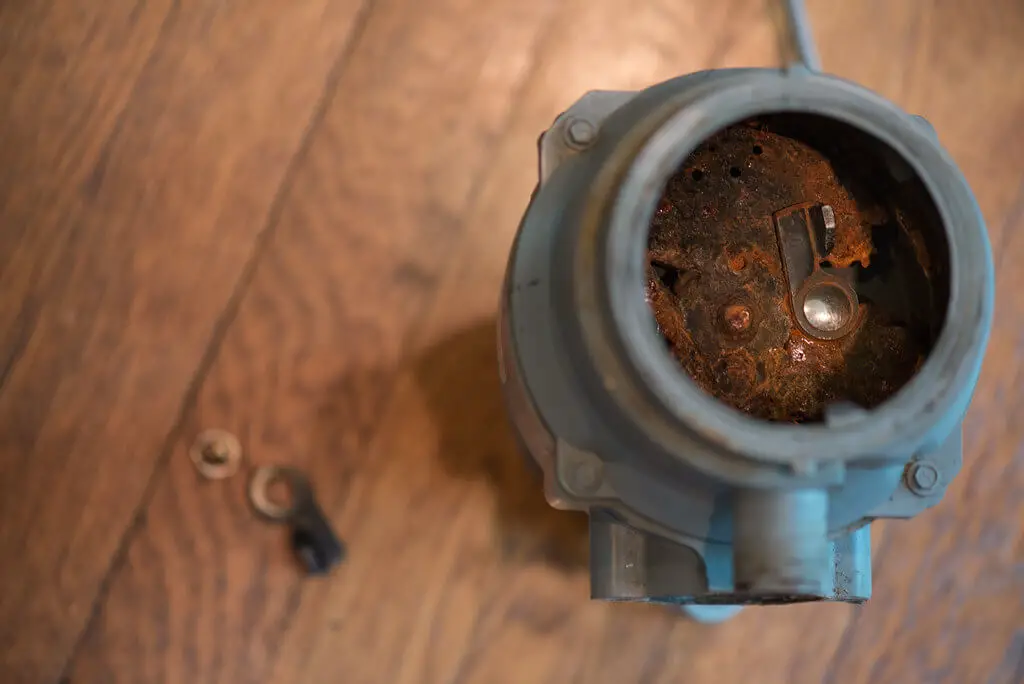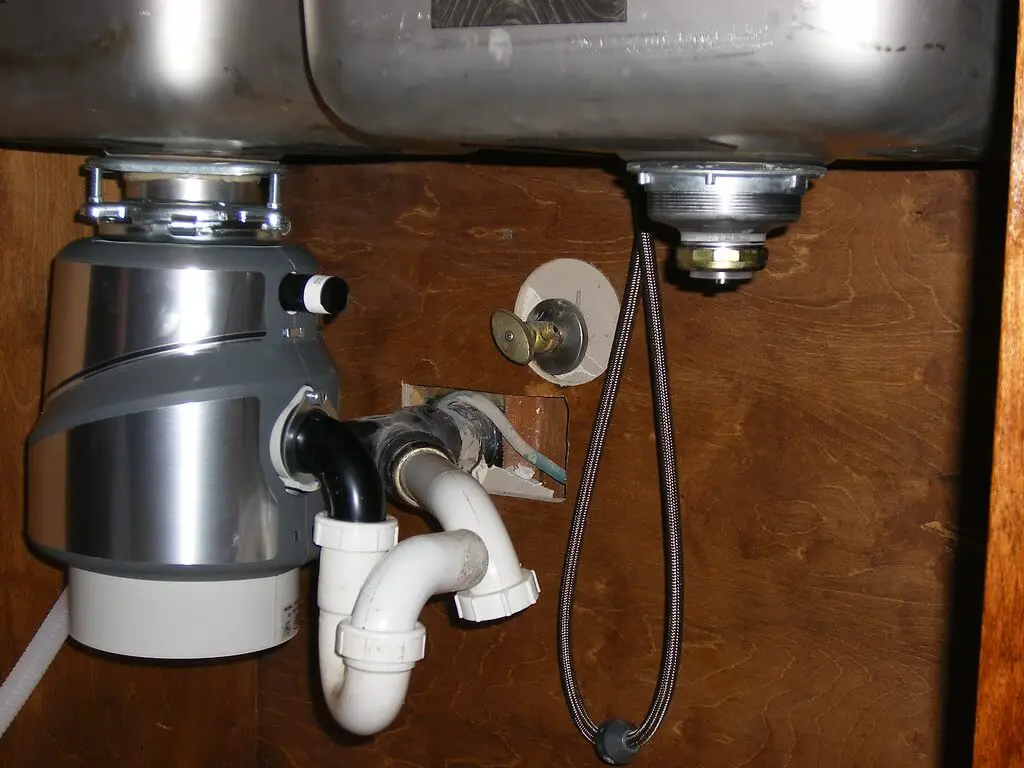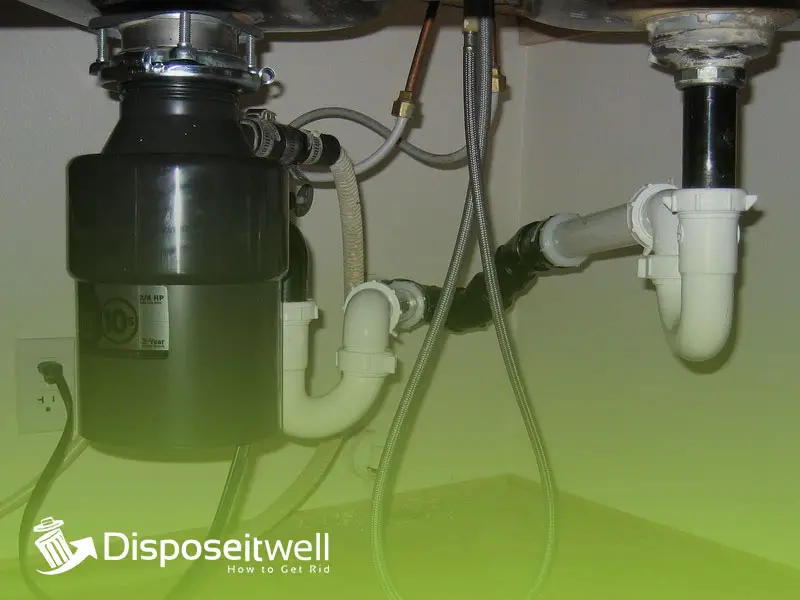Are you tired of food scraps clogging up your kitchen sink? Are you considering a replacement for your beloved garbage disposal? Before you do that, you may want to consider sharpening its blades first.
There are several methods that can be used to sharpen garbage disposal blades. One way is to put a few ice cubes in the disposal; the sharp edges of the cubes help to sharpen the blades. Alternatively, you can use hot water and a small amount of dish soap to do the same.
Additionally, you can pour vinegar and baking soda into the drain, let it sit for a few minutes, and then flush it with hot water. Doing this a couple of times a month can help to keep the blades sharp and running efficiently.
In this article, we will discuss the easy steps of how to sharpen garbage disposal blades that will restore your sink to its optimal performance in no time.
How Does a Garbage Disposal Unit Actually Work?
A garbage disposal unit is an appliance that is installed underneath a kitchen sink and is designed to shred food waste into small particles that can be easily flushed down the drain.
Although many people assume that a disposer works like a blender with spinning blades chopping and breaking down the waste, in reality, disposers work in a different way and there are no blades involved.
Working principle:
The basic principle of a garbage disposal unit is to use centrifugal force to continuously force food waste particles against a stationary grind ring, which breaks down the food waste into very fine particles, virtually liquefying them. This process is achieved through the use of impellers or lugs that are mounted on a spinning plate inside the disposer.
When food waste is placed into the disposer, the impellers or lugs on the spinning plate begin to move, creating a powerful vortex that draws the food waste toward the grind ring. As the food waste particles are forced against the grind ring, they are broken down into smaller particles until they are small enough to pass through the holes in the grind ring.
After the food waste is ground, the running water in the sink flushes the particles through the grind ring and out of the disposer, and into the wastewater pipe. From there, the wastewater containing the food waste particles flows to a wastewater treatment plant or septic system for further processing.
How to Recognize When Your Garbage Disposal Needs Repair

Garbage disposal is an essential machine for breaking down food waste, and keeping your kitchen clean & odour-free. But when do you know it needs repair? Here’s the answer.
1. Clogged Disposal: Clogged garbage disposals are one of the most common forms of malfunction. If you notice your disposal is not running properly or not draining, it may be a sign that something is stuck and needs to be cleared.
2. Loud or Strange Noises: If the garbage disposal is making loud or unusual noises, it could be a sign that something else is wrong internally. This could be a result of a broken or worn-out motor and would require professional repair.
3. Leaking from the Bottom: If you’re seeing fluid dripping from your disposal, it’s likely due to a broken seal or a worn gasket. It may be time to call in a professional to handle the repair.
4. Lack of Power: In case your garbage disposal is not spinning when you turn it on, this could be a sign of a number of issues, such as a broken motor, a jammed impeller plate, or a worn seal.
5. Bad Odors: In case you detect an unpleasant smell emanating from your disposal. This can point to a blockage or a buildup of food scraps, which you can try to dissolve with a sink auger. However, if the odor persists, it may be an indication of a more serious problem.
How to Sharpen Garbage Disposal Blades
If you want your garbage disposal to work like a well-oiled machine, sharpening its blades is a must. To get your blades back in tip-top shape, try out any of these methods.

1. Using Ice Cubes
Ice cubes can be used to sharpen garbage disposal blades. This method should be used on a regular basis to keep the blades sharp and working efficiently. To do this, fill the sink with cold water and add some ice cubes. Then, turn on the garbage disposal and let the ice cubes grind away. This will help break up any build-up inside the unit and sharpen the blades.
2. Using Hot Water and Soap
For those times when heavier buildup accumulates in your garbage disposal unit, hot water and soap are one of the best ways to get things back in shape. Fill the sink with hot water, add a few squirts of dish soap, and then turn on the disposal. Let it run for a few minutes and feel the heat break down any grease and food particles that have slowly gathered on the blades.
3. Vinegar and Baking Soda
This phenomenon is a great way to help clean and sharpen the blades of your garbage disposal. Start by pouring a cup of white vinegar into the disposal and letting it sit for a few minutes. Then, pour a cup of baking soda into the disposal and let it fizz up. Finally, turn on the disposal and let it run for a few minutes. This will help to clean the blades and remove any buildup that might be causing them to become dull.
Moreover, the UC ANR Division of Agriculture and Natural Resources reports that vinegar and baking soda are superior for honing blades and eliminating rust or other unsightly things from them.
4. Some other Ways
If you want to keep your garbage disposal blades razor sharp, there are also a few options available other than those mentioned above. A wire brush or an old toothbrush can help scrub away any built-up gunk, while a grinding stone or sharpening stone can help bring them back to their original sharpness. Just be sure to take care when using any kind of sharpening tool as improper use could easily damage the blades.
How To Keep Your Garbage Disposal Running Optimally
Keeping your garbage disposal running optimally requires some good practices that prevent damage and blockages. Here are some guidelines and tips to help you out:
1. Use composting: The garbage disposal is not a blender or a garbage can, so try to compost as much debris as possible rather than shoving it down the pipes. Use a compost bin or pile for food scraps, coffee grounds, and other organic materials that can break down naturally.
2. Avoid putting certain things: Some items should not go down the garbage disposal. Avoid putting grease, oil, or fats down the drain as they can clog up the pipes. Likewise, rice and pasta will expand with water and cause a backup. The disposal isn’t strong enough to handle seeds or bones, which will just fill the blades.
Eggshells and fibrous veggies like celery and potato peels can get wrapped around the blade and clog up the machine. A few scraps are fine, but try to keep it minimal.
3. Regular Cleaning: Regularly clean your garbage disposal to prevent build-up and odors. Pour two cups of ice and a cup of rock salt or a cup of vinegar down it, then run the disposal with cold water for at least five to ten seconds. It’s recommended to always use cold water versus hot to prevent grease that does make it there from congealing further down the pipes.
4. Complete drain pipe cleaning: To completely clear the drain pipes, plug the drain and fill the sink with a few inches of water, then remove the drain plug and turn on the garbage disposal. This will let the entire unit flush with water and clear any remaining debris.
5. Freshening up: Toss in a few citrus peels and run the machine with water to freshen it up. Citrus helps to remove odors and provides a refreshing scent.
6. Use it at least once a week: Even if you don’t use your garbage disposal that often, it’s important to turn it on at least once a week and let it run for about 30 seconds. Running water down it while it’s turning will help keep the motor in good shape and prevent any rust or debris from getting clogged in the disposal.
Things Not To Do
Here are the things you should avoid doing with your garbage disposal unit to prevent a slow kitchen drain:
1. Never pour hot grease down your disposal: Hot grease will eventually cool and solidify, which can lead to clogs in your kitchen drain. Instead, let the grease cool and then scrape it into your garbage can.
2. Avoid putting coffee grounds and tea leaves into your garbage disposal: Coffee grounds and tea leaves tend to accumulate in the drain trap, which can cause clogs over time. It’s better to collect them separately and dispose of them in the garbage can.
3. Don’t put flour, pasta, rice, or potato/vegetable peels down your disposal: These foods have a tendency to bind together and can clog your pipes. It’s best to dispose of them in your garbage can.
4. Never Put Non-Food Items in the Disposal: Non-food items such as glass, metal, plastic, paper, and rubber should never be put down the disposal.
5. Do Not Put Bones Down the Disposal: Bones are too hard to be broken down by the blades in the disposal unit. As such, they can get stuck in the unit and cause clogs.
In addition to these tips, it’s also recommended to run hot water for about 15 to 30 seconds after turning off the disposal to help flush the line and prevent backups.
FAQs
Do limes sharpen garbage disposal blades?
Yes, limes can sharpen garbage disposal blades. The acidity of the lime helps to break down the buildup on the blades, allowing them to cut more efficiently. Citric acid also helps to remove odors from the disposal. Additionally, the pulp of the lime helps to scrub away any residue on the blades.
Can you sharpen a stainless steel blade?
Yes, you can sharpen a stainless steel blade. Sharpening a stainless steel blade involves grinding down the edge of the blade to create a sharper angle. This can be done with a whetstone or a sharpening stone. It is important to note that stainless steel is a softer metal than other types of steel, so it is more prone to chipping or damage. Therefore, it is important to use a gentle hand when sharpening stainless steel blades.
Final Thoughts
By following the simple steps mentioned in this article, you can easily sharpen your garbage disposal blades and ensure they are operating at peak performance.
With regular maintenance and careful attention, you can keep your garbage disposal blades sharp and running smoothly. Not only will this save you time and money, but it will also ensure you have a working garbage disposal that can keep your kitchen clean and hygienic without the need for costly repairs.
My name is Ella Vicedomine and I’m the founder of this blog. The aim is to start this informational blog to guide people on how to dispose of waste things around in the house but in the right way.


